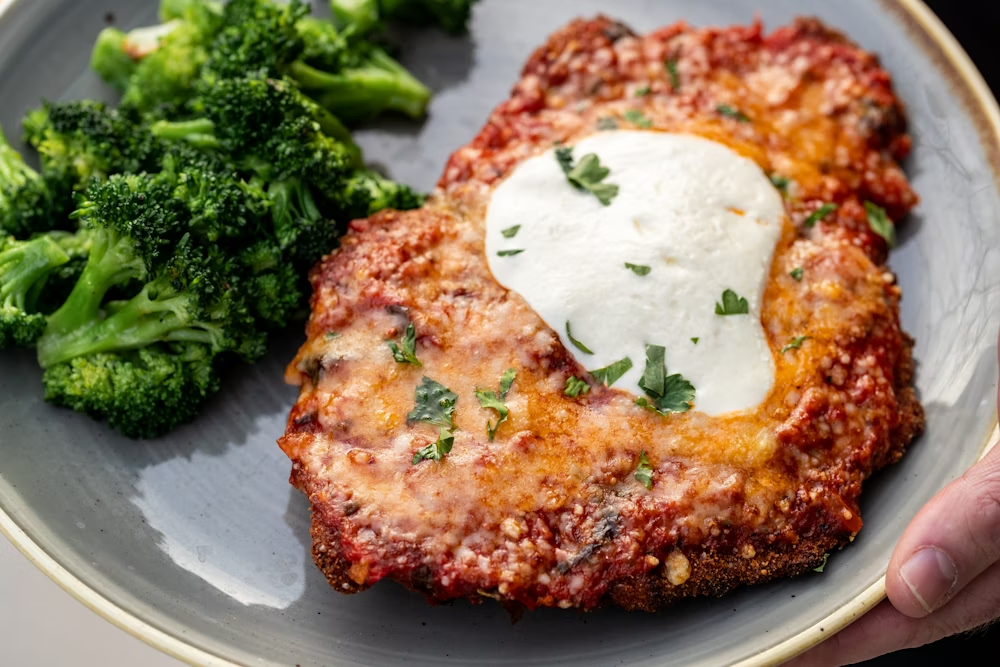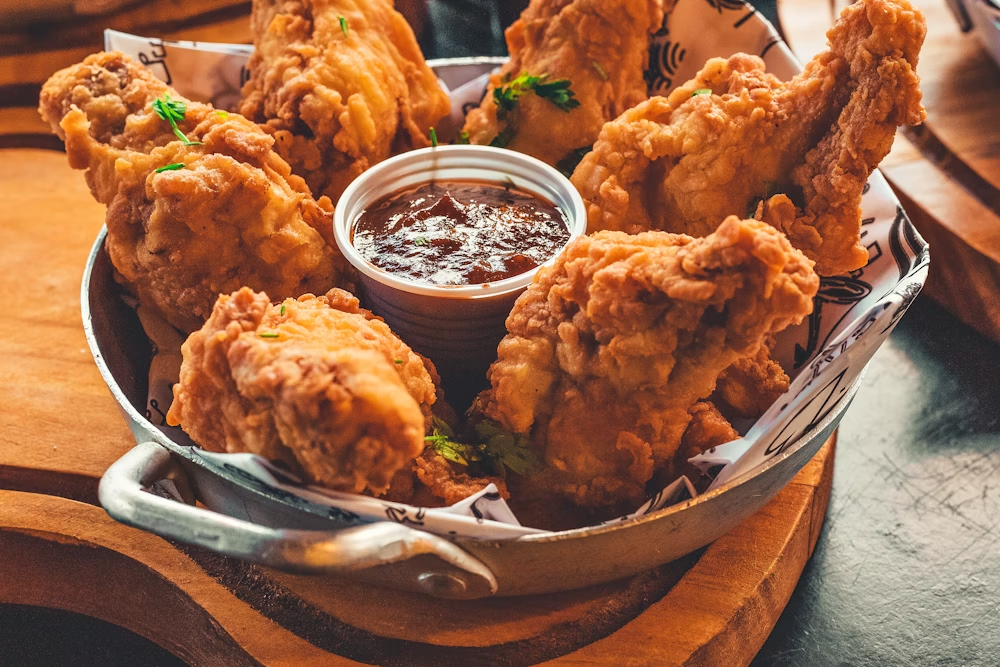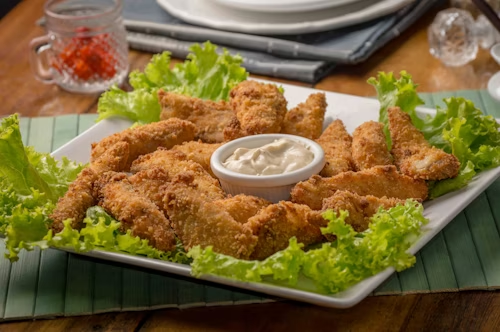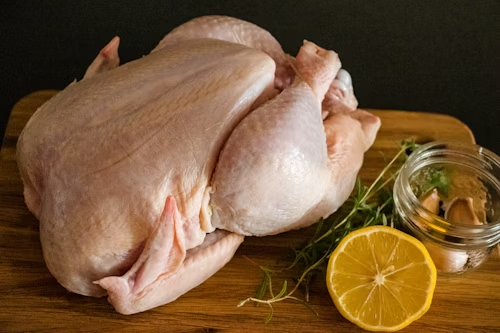When I first conceived of the Noragencies project, I knew I wanted to explore more than just modern Australian cuisine. To truly understand the depth of Australia's food culture, I needed to connect with its origins—the traditional cooking methods of our First Nations peoples. This adventure took me to the Northern Territory, where I spent a week learning from indigenous elders about traditional bush tucker preparations and how these ancient techniques can be applied to cooking chicken.
Meeting My Teachers
My journey began in a small community near Katherine, where I was welcomed by Uncle David, an elder of the Jawoyn people, and his sister Aunty Margaret. Both in their seventies, they've spent decades preserving and sharing their traditional food knowledge.
"We don't usually teach these methods to just anyone," Uncle David told me as we sat in the shade of a eucalyptus tree. "But food brings people together, and sharing our culture helps people understand it better."
I explained my chicken-focused food project, and after a good laugh about the concept, they agreed to teach me how traditional cooking methods could transform ordinary chicken into something extraordinary.

Aunty Margaret teaching me about native herbs and spices that can be used with chicken
Bush Tucker Basics
Before we could start cooking, I needed to understand the principles of traditional Aboriginal cuisine. Uncle David explained that indigenous cooking is deeply connected to the land, with techniques and ingredients varying by region, season, and available resources.
"Our food isn't just about taste," Aunty Margaret added. "It's about connection to Country, sustainability, and respect for what the land provides."
Key principles include:
- Using the whole animal - Nothing is wasted
- Cooking slowly - Often in earth ovens or over coals
- Utilizing native herbs and spices - Many unknown to non-indigenous Australians
- Combining flavors from the same ecosystem - Creating natural harmony
- Cooking according to season and availability - Working with nature's cycles
Method 1: Earth Oven Chicken (Kap Mauri)
Our first cooking lesson involved creating a traditional earth oven, known by different names in various indigenous languages. In the Jawoyn language, it's called "mimi," while in other regions it might be known as "kap mauri" or "hangi" (the latter being the Māori term that has become widely used).
The process began by digging a pit about 50cm deep and 1m wide. Uncle David carefully selected specific ironwood and paperbark branches for the fire, explaining that different woods impart different flavors.
After starting the fire, we placed rocks on top to heat up. While waiting for the rocks to get hot enough, we prepared a whole chicken that I'd brought. Uncle David showed me how to stuff the cavity with native lemon grass, wild thyme, and a type of native basil I'd never encountered before.
"These plants grow together in the same areas where traditionally we would hunt birds," Aunty Margaret explained. "Nature puts compatible flavors together if you know where to look."
Once the rocks were hot, we carefully brushed aside some of the coals, placed the wrapped chicken (sealed in paperbark and then banana leaves) on the hot rocks, and covered everything with the remaining coals, wet paperbark, and finally dirt to seal in the heat.
Three hours later, we uncovered our creation to reveal the most tender, aromatic chicken I've ever tasted. The meat was infused with a subtle smokiness and the complex flavors of the native herbs.
"When you cook this way, you're cooking the same way our ancestors did for tens of thousands of years. The chicken might be new, but the connection to Country is ancient."— Uncle David, Jawoyn Elder
Method 2: Paperbark Wrapped Chicken with Bush Spices
The next day, we tried a different approach that Aunty Margaret said would be more practical for modern home cooks wanting to try indigenous flavors.
We started by creating a spice rub using ground wattleseed, bush tomato (also known as kutjera), and native pepperberry—all traditional ingredients with deep roots in indigenous cuisine.
"Wattleseed has a nutty, coffee-like flavor that pairs beautifully with chicken," Aunty Margaret told me as she showed me how to properly grind the seeds using traditional stone tools.
After rubbing the chicken pieces with this spice mixture, we wrapped them tightly in moistened paperbark, which Uncle David had carefully harvested from a nearby tree.
"The paperbark is crucial—it seals in moisture while adding a subtle tea-like flavor to the meat," he explained.
We placed the parcels on hot coals and let them cook slowly for about an hour. The result was chicken with a complex, uniquely Australian flavor profile unlike anything I'd tasted in restaurants.

Cooking chicken wrapped in paperbark over an open fire
Method 3: Ash-Baked Chicken with Native Herbs
For our final cooking method, Uncle David showed me a technique that he said dated back countless generations. This method involved coating chicken pieces in a paste made from Kakadu plum (with an incredibly tart flavor and exceptionally high vitamin C content), lemon myrtle, and a clay-like edible soil.
"This cooking method preserves all the juices inside a protective layer," Uncle David explained as he demonstrated how to properly coat the chicken.
Once coated, the chicken pieces were buried directly in the hot ashes of our fire. After about 45 minutes, we carefully removed them and cracked open the now-hardened coating to reveal perfectly cooked chicken with a flavor that was simultaneously smoky, citrusy, and earthy.
What surprised me most was how the clay coating had drawn out excess fat while sealing in moisture, resulting in chicken that was both leaner and juicier than conventionally cooked poultry.
Modern Adaptations for Home Cooks
Recognizing that not everyone can dig a pit in their backyard or source paperbark, Aunty Margaret shared some adaptations of these traditional methods that can be used in modern kitchens:
- Earth oven substitute: Use a Dutch oven with heated stones at the bottom to recreate the steaming environment
- Paperbark alternative: Parchment paper soaked in black tea can provide a similar (though not identical) effect
- Native ingredients: Many bush foods are now available online or at specialty food stores
- Ash cooking simulation: A salt crust with activated charcoal can approximate the flavor profile
Cultural Significance Beyond Technique
Throughout my week with Uncle David and Aunty Margaret, I learned that Aboriginal cooking is about much more than techniques and flavors—it's about connection to land, community, and tradition.
"When we teach these methods, we're not just sharing recipes," Uncle David told me as we shared our final meal together. "We're sharing our culture, our history, and our way of seeing the world."
Each cooking method came with stories—about the plants we used, the significance of fire, the animals traditionally hunted, and the gatherings where these foods would be shared.
Aunty Margaret explained that food preparation was traditionally a community activity, with different roles based on age, gender, and skill. While roles have evolved in modern times, the communal aspect of food preparation remains important in Aboriginal cultures.
The Conservation Aspect
Both elders emphasized the importance of sustainable harvesting and respect for the environment—principles deeply embedded in traditional Aboriginal food culture.
"We never take more than we need, and we always ensure plants can regenerate," explained Aunty Margaret as she showed me how to properly harvest native herbs without damaging the plant.
This philosophy stands in stark contrast to modern industrial food systems, and it was a powerful reminder of how indigenous wisdom could inform more sustainable approaches to contemporary food production.
Final Thoughts
My week learning Aboriginal cooking methods was the most educational experience of my Noragencies journey so far. While I came seeking new chicken recipes, I left with a deeper appreciation for Australia's first food culture and the sophisticated culinary techniques that have been developed over tens of thousands of years.
These cooking methods don't just produce delicious food—they represent a holistic approach to cuisine that honors ingredients, environment, and community. In an era of fast food and disconnection from food sources, these ancient techniques offer valuable wisdom.
I want to express my profound gratitude to Uncle David and Aunty Margaret for sharing their knowledge and traditions with me. Their generosity in teaching these methods helps ensure these cultural practices continue to be appreciated and preserved.
For those interested in exploring Aboriginal cuisine further, I've included links to indigenous-owned businesses that ethically source native ingredients and resources for learning more about bush foods and traditional cooking methods.


